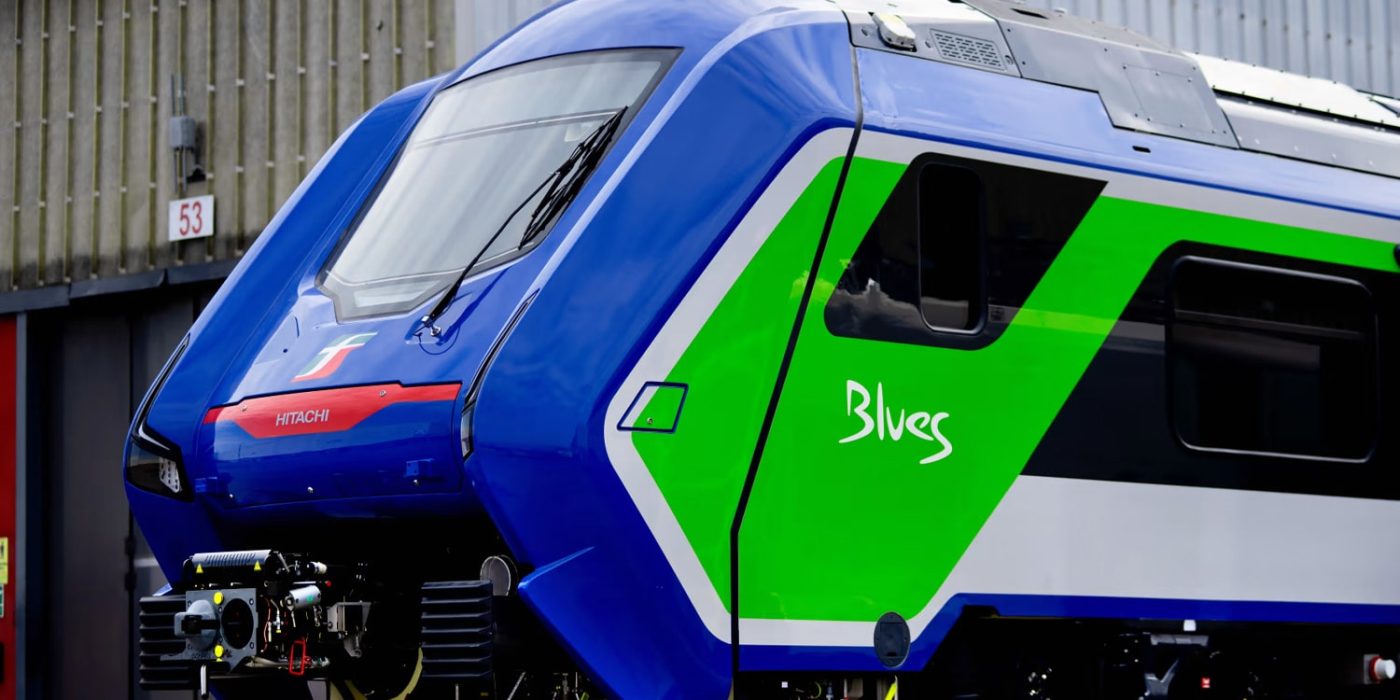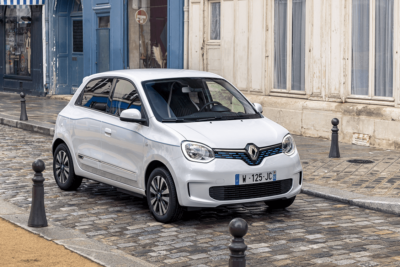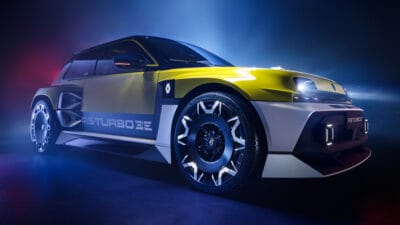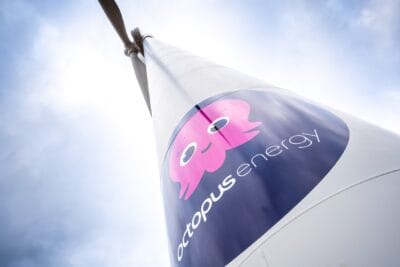Hitachi Rail releases “tribrid” train Masaccio in Italy
Hitachi Rail has started producing its latest train with a flexible drive concept that will run exclusively battery-electric in the future. Hitachi calls the Masaccio a “tribrid” because it can be operated flexibly via an overhead line, purely electric or as a diesel hybrid.
Hitachi Rail produced the first 20 units of the Masaccio in its factory in Pistoia near Florence, Italy. Neither the site nor, in fact, the name is random – Masaccio was a Florentine artist in the 15th century; moreover, Hitachi made the trains as part of a large order by the Italian railway company, Trenitalia, which is now using the train throughout Italy.
The completion of 20 trains, branded as ‘Blues’ by Trenitalia, is only the first tranche of an order for 135 such tribrid trains. The €1.23bn framework agreement with the rail company will see trains running across Sicily, Sardinia, Calabria, Tuscany, Lazio and Friuli Venezia Giulia – mostly on electric power.
While Hitachi Rail already uses diesel-electric hybrid technology, for example, on the UK’s Intercity Express fleets, the launch in Italy is the first time batteries have been deployed as a major power source on a train fleet for commercial use anywhere in Europe, writes the company.
Technologically, the new tribrid can run on any route, electrified or not, at a top speed of 160 km/h. It uses pantographs to draw power from the overhead lines where available. However, when it moves to non-electrified lines, usually more minor regional routes, a combination of battery and diesel power takes over. When it is near a station, the batteries power the train entirely, eliminating emissions, including NOx and noise pollution. The battery can recharge while the train is in operation, both in diesel and electric mode. Moreover, the extra power offered by the onboard batteries means the Blues train’s acceleration and performance are superior to existing diesel trains, allowing it to offer reduced journey times for passengers, so Hitachi.
And Hitachi Rail is already planning to develop the Masaccio further. The next model, scheduled to hit the tracks in about two years, will already be purely battery-electric with a range of over 100 kilometres.
The technology can also be retrofitted, and according to Hitachi Rail, this means that “today’s hybrid trains will probably only be battery-powered in the future”.
A train to electrify all of Europe
And they may be so beyond Italy- Luca D’Aquila, Chief Operating Officer Hitachi Rail Group and CEO of Hitachi Rail Italy, added, “The roll-out of our cutting-edge Masaccio battery train marks an important step in our efforts to decarbonise European rail.”
In Italy alone, there are more than 4,000km of track that are not electrified, so the tribrid Blues train will help cut carbon emissions by 50% compared to existing diesel services, explains Hitachi.
Moreover, nearly half of Europe’s regional lines remain unelectrified, meaning ten-thousands of kilometres of tracks are in a similar state across Europe, currently serviced only by diesel trains. Hybrid technology can have an “immediate impact,” adds the COO, and makes the Masaccio an option.
Hitachi further makes a long-term case for battery trains on lines or in areas where geographical or topological features make electrification “very hard to achieve”. This includes tough gradients in for example mountaneous regions, where the new trains may help. Hitachi also points to the flexibility of the design that may suit busy commuter journeys and more leisurely rides.
Debuted at Innotrans 2022 in Berlin, Hitachi says it designed the Masaccio platform for railways across Europe. The trains are built at a Europe-wide gauge and with European Rail Traffic Management System (ERTMS) digital signalling included onboard.
The Masaccio train’s DAS (Driver Advisory System) also helps cut emissions by identifying the optimal speed to remain on time and reducing energy consumption. Moreover, Masaccio trains are made with 93% recyclable materials.





0 Comments